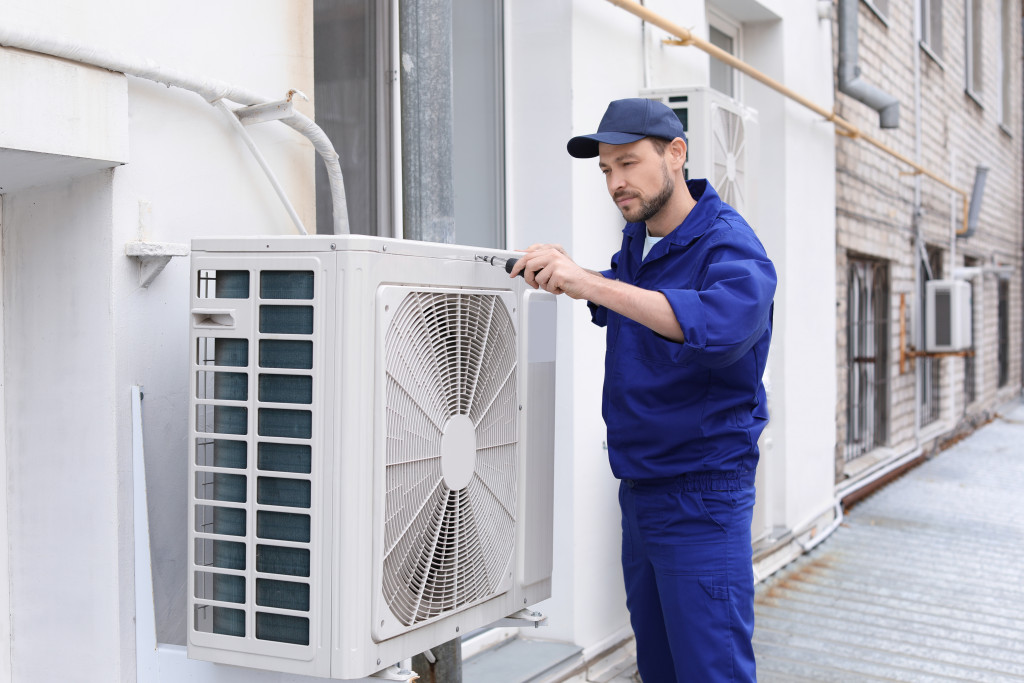Health experts attribute the spread of the COVID-19 virus to the small particles (aerosols) in the atmosphere inhaled by people who have been near an infected individual who has remained in an enclosed section, especially in the workplace. However, keep proper ventilation in mind when implementing the necessary management measures to reduce the risk of transmission to make your workplace secure from the COVID-19 virus. With adequate ventilation, the concentration of the virus in the air is reduced due to improved airflow, which lowers the risk of transmission.
Consequences of Insufficient Ventilation
Apart from risking your employees and customers to the COVID-19 virus, insufficient ventilation has other consequences. When not addressed correctly, improper ventilation can have severe health implications. Here are some things that can happen with improper airflow in a building:
- Oxygen Concentrations: When there is not enough air circulation in a space or building, oxygen levels drop, and carbon dioxide rises. This can cause the air to seem congested, contributing to fatigue and headaches among office workers. Stuffy air conditions can be detected with as low as 0.02 percent extra carbon dioxide in indoor air compared to the outside air.
- Microbial Growth and Condensation: Mold and mildew can be a real headache because once they start growing, they can quickly spread throughout your home or business. A lack of cross-flow ventilation and inferior indoor air quality are the most likely causes of the odor produced by fungal growth. As such, mold spores and mildew can move through the air and infect those with preexisting respiratory issues.
How to Enhance the Quality of the Air Around You
Knowing what can go wrong with insufficient ventilation, you can now focus on what you can do to enhance indoor air quality and make working conditions better. Here are a few things you can do:
- Allow for Fresh Air to Flow: Building owners can increase airflow inside a building and reduce pollution by letting in fresh, natural air. Natural ventilation, on the other hand, can be erratic and out of your control. Natural ventilation cannot take place unless the outside wind is blowing correctly and the weather is appropriate. The temperature outside can also have an impact on how well the building’s natural ventilation works. If no other means of ventilation are available, natural ventilation can be a viable alternative.
- Ventilation for the Whole Building: Whole-building ventilation systems with regulated ventilation are an option if you think natural and spot venting is insufficient to guarantee high-quality air in the building. These systems will use fans and duct systems to remove old, dusty, dirty air and replace them with clean, fresh air throughout the structure.
- Heating, Ventilation, and Air-conditioning System: By simply installing air conditioning units throughout a structure, you can achieve better airflow in your building. HVAC systems can remove pollen, dust, and mold spores from the air, then filter them to provide better indoor air. Using this technique in severe weather also has the additional benefit of keeping employees comfortable because of the lower temperatures. Complimentary to an HVAC system, you should also invest in air purifier installation. With these two systems working simultaneously, you can ensure clean air in your building.
How to Reduce the Spread of Disease via the Air

Improving the airflow is one thing you can do to minimize the risk of diseases in the air. However, you also need to keep your mechanical systems up-to-date, following applicable laws and manufacturer’s instructions. Furthermore, air conditioning should be used typically, with air freshness maximized and recirculation minimized. To make HVAC systems more efficient, try running them before and after people arrive at work.
Air Pressure
Standard ventilation practices assist in maintaining a building’s ventilation system running well regardless of the kind of ventilation you’re using. The ideal floor space per person is between 50 and 100 square feet, with ceilings no higher than 10 to 12 feet. Workplaces should have four to six air changes each hour. A draught-like atmosphere can be created by doing more air changes than six in an hour, so stay below that limit. Fresh air consumption per person per hour should be at least 300 to 3,000 cubic feet. Workers will breathe clean air all day long because of these large quantities of fresh air.
Reducing the Amount of Toxic Pollution in the Air
Many contaminants in your office building end up in the air you breathe. These items include anything from the furnishings to the structure itself and any leftover paint, carpeting, or cleaning supplies. Choose furniture with less strong odors or finishes to reduce air pollution, such as wood furniture with protectants and polishes. By doing so, you can reduce the amount of these pollutants in your home. Choose environmentally friendly cleaning products and avoid letting air from sources such as heavy traffic, building exhausts, plumbing vents, and generators enter the building as much as you possibly can.
Increasing your ventilation for a cleaner, healthier, and more energizing working environment can be a sizeable investment at first. But you are protecting not only you and your employees but all those who visit your building as well. Follow the short guide in this post so you can make your working environment safer for everyone.

